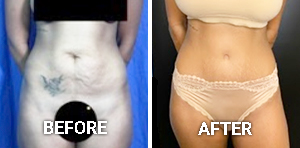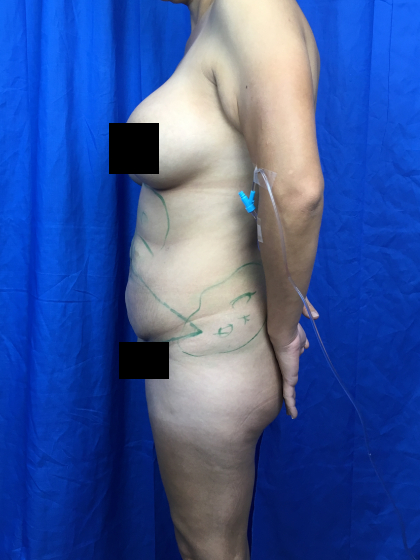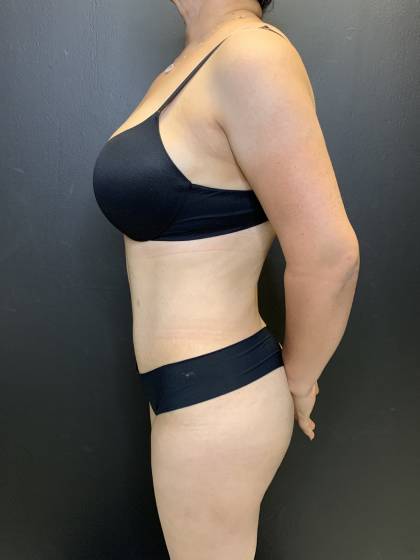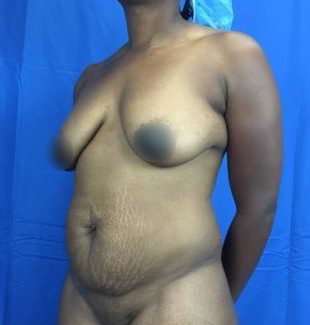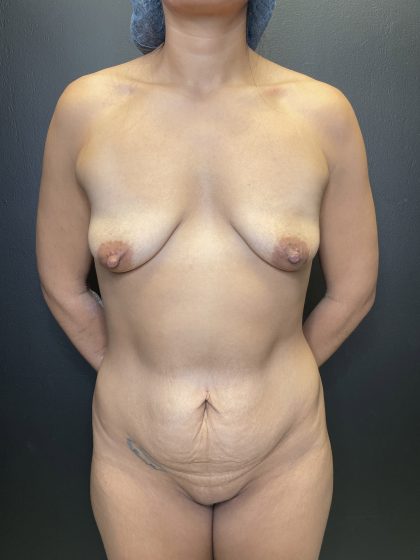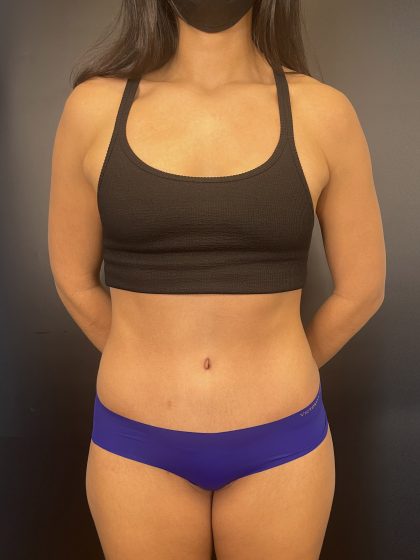Tummy Tuck
Conveniently located to serve the areas of Beverly Hills and Greater Los Angeles

Dr. Michael Omidi is a board-certified surgeon, maintaining certification in both plastic surgery and abdominal surgery. Dr. Omidi is an expert in tummy tucks and treats patients in Beverly Hills, Apple Valley, the Greater Los Angeles Area as well as the Inland Empire. The tummy tuck or abdominoplasty procedure is one of the top performed procedures for moms and patients who have lost weight. The tummy tuck procedure is designed to address loose skin and bulging abdomen, creating beautiful contour that you desire.
Contents
- 1 Before and After Photos
- 2 WHAT IS A TUMMY TUCK?
- 3 Tummy Tuck v. Liposuction
- 4 Is a Tummy Tuck Right For You?
- 5 Deciding Between a Mini Tummy Tuck & A Full Tummy Tuck
- 6 High Lateral Tension Tummy Tuck
- 7 Panniculectomy
- 8 Fleur-de-Lis Abdominoplasty
- 9 African American Tummy Tuck
- 10 Full Tummy Tuck vs. Mini Tummy Tuck
- 11 MALE TUMMY TUCK
- 12 GETTING READY FOR YOUR TUMMY TUCK
- 13 SCHEDULING A CONSULTATION
Before and After Photos
WHAT IS A TUMMY TUCK?
A tummy tuck removes fatty tissue resistant to diet and exercise and eliminates excess skin in your abdominal area. In addition, a tummy tuck can tighten your abdominal muscles that have been separated and weakened by pregnancy or lack of activity. It may also reduce the appearance of stretch marks, especially those located below the navel.
Tummy Tuck v. Liposuction
“Do I need a tummy tuck or liposuction?” In Dr. Michael Omidi’s extensive experience as a plastic surgeon, this question reveals one of the most common concerns during his consultations with patients. As the following comparison illustrates, both procedures have distinct pros and cons:
- Liposuction addresses specific “problem areas” such as muffin tops, while a tummy tuck eliminates excess fat from the abdominal area
- Unlike liposuction, tummy tucks correct flabby, hanging skin that typically persists after weight loss
- Comparted to liposuction, tummy tucks are more invasive and result in greater scarring
- Unlike liposuction, tummy tucks effectively repair separated abdominal muscles that have been weakened by a lack of physical activity or pregnancy
Many of Dr. Michael Omidi’s patients find that combining liposuction with a tummy tuck can enhance the results and create a more contoured lower abdominal area.
Is a Tummy Tuck Right For You?
During your consultation, Dr. Michael Omidi will respond to all of your questions and determine whether a tummy tuck is right for you. Known for being honest with his patients, he always cautions that this procedure should not be treated as a substitute for weight loss through exercise and diet. In addition, Dr. Michael Omidi will explain that patients with a BMI (Body Mass Index) of 30 or less have a better chance of obtaining desirable results and a lower risk of complications. That being said, he has an extensive experience assisting patients with elevated BMI. Thus, he will accommodate your needs when weight can be lost through diet and exercise regimen.
Deciding Between a Mini Tummy Tuck & A Full Tummy Tuck

During the consultation, Dr. Michael Omidi will carefully weigh your options to help you decide whether to opt for a mini tummy tuck or a full tummy tuck. If laxity and excess skin are concentrated below your navel, a mini tummy tuck may be right for you. If you desire to correct excessive skin, muscle separation, and bulging of the upper abdomen, then a full tummy tuck may be your only solution.
Mini Tummy Tuck
- A mini tummy tuck involves a smaller incision around your bikini area; no incision is required around your belly button. Once excess skin and fat are removed through the incision, permanent sutures will be placed to tighten abdominal muscles.
- A mini tummy tuck is often performed in conjunction with liposuction of the upper abdomen and the flank areas.
- A mini tummy tuck can also be performed under a local anesthetic as opposed to general anesthesia for a full procedure. The resulting scarring is much smaller and is located low enough to be concealed beneath a bathing suit or underwear.
Full Tummy Tuck
- A full tummy tuck involves an incision around the belly button and another incision on the lower abdomen. During this procedure, the excess skin and fat are removed, and the entire abdominal wall is tightened with permanent sutures.
- Typically requires 4 hours in surgery, a mini tummy tuck can usually be performed in about an hour.
- Full tummy tuck remains the best option for patients seeking to address muscle separation and flabby skin above the belly button that cannot be corrected with a mini tummy tuck.
High Lateral Tension Tummy Tuck
Designed for patients who want to get the most out of their tummy tucks, Dr. Michael Omidi is proud to offer a high lateral tension tummy tuck. This advanced body-contouring procedure will not only tone your abdomen but also contour your thigh region. The result is a highly effective body lift that will transform your appearance.
What is a High Lateral Tension Tummy Tuck?

A high lateral tension tummy tuck achieves amazing contouring effects because it removes a greater amount of excess skin. This advanced technique was introduced after plastic surgeons had recognized that loose skin develops regions. A high lateral tension tummy tuck is the technique of choice that Dr. Michael Omidi uses to remove love handles and muffin tops.
When performing a high lateral tension tummy tuck, Dr. Michael Omidi shifts the focus of tension to the outer upper portions of the abdomen. As a result, this procedure creates flattering curves and the hourglass figure to provide a more feminine contour. Dr. Michael Omidi uses a modified high lateral tension technique to create a very low incision that can hide under the bikini line. This way you can enjoy amazing body-lifting effects without the disadvantages of visible scarring.
A high lateral tension tummy tuck is more of a body-contouring procedure rather than a traditional tummy tuck.
Benefits
- Eliminates excess tissue on the sides
- Removes stretch marks, muffin tops, and love handles
- Tones outer portions of the abdomen
- Tightens the thigh area and lifts the buttocks
- Contours the tissues around the belly button and the flanks
- Repairs separated muscles and the fascia (tissue between the skin and muscle)
- Provides the hour-glass figure and overall body-lifting effect
- Creates a very low incision that can be hidden under the bikini line
Disadvantages
- Wider incision
- Longer healing period
Are You the Right Candidate?
During your consultation, Dr. Michael Omidi will determine if you are a good candidate after discussing the risks and benefits of a high lateral tension tummy tuck. You may be the right candidate for this procedure if you have:
- Experienced a massive weight loss
- Had a pregnancy
- Stabilized your weight
- Large amount of excess skin
- Sagging in the buttocks and thigh region
- Love handles or muffin tops
- Stretch marks
How is a High Lateral Tension Tummy Tuck Performed?
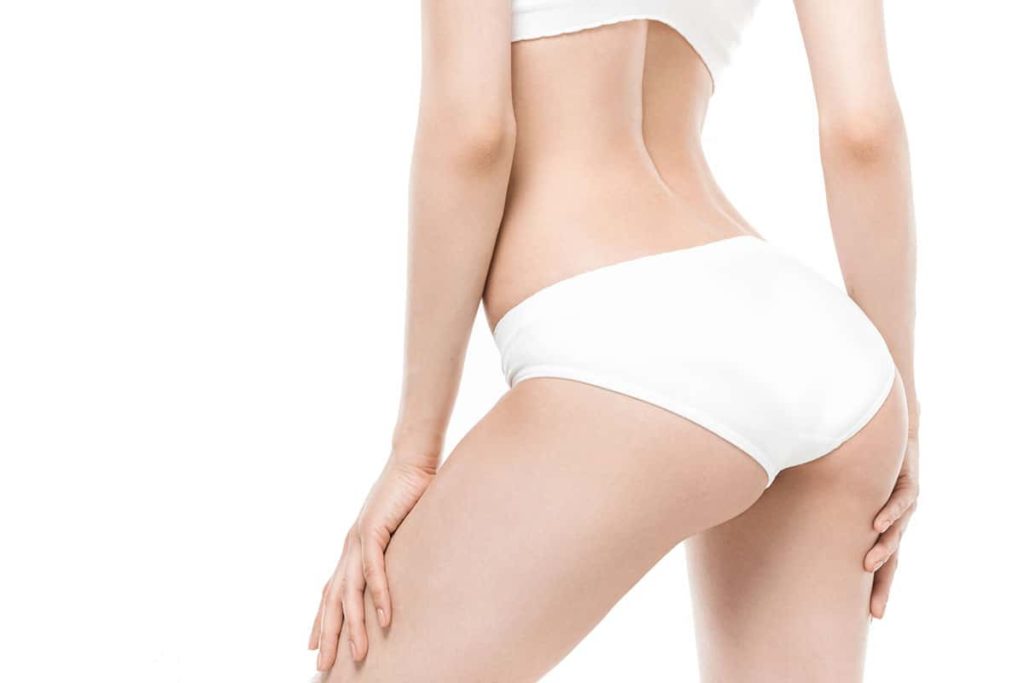
To achieve the best results, high lateral tension tummy tuck depends on the planning of the incision, elevation of the skin, and closure technique. Dr. Michael Omidi takes the following steps while performing this procedure:
- Experienced anesthesiologist or CRNA will use general anesthesia for your safety.
- Dr. Michael Omidi will make a horizontal incision that extends outwards just below the navel.
- Through wider incision, he will eliminate excess skin and fat, repair separated muscles, and treat the fascia.
- Dr. Michael Omidi will put the abdominal skin down, while pulling the skin around the thighs up for maximum contouring effect.
- He will then close the incision with sutures.
- A high lateral tension tummy tuck typically takes longer than a regular tummy tuck and may last up to 5 hours.
High Lateral Tension Recovery
A high lateral tension tummy tuck is more extensive than a regular tummy tuck. For this reason, it usually requires longer recovery times. After your procedure, you may need to spend one night in the inpatient setting before returning home. Dr. Michael Omidi and his staff will provide a recovery facility for you to stay overnight. Some degree of swelling and bruising may appear immediately after the procedure and is considered normal. Dr. Michael Omidi will place drainage tubes to prevent accumulation of fluids under your skin. You should refrain from showering for one or two weeks until the drains have been removed.
Panniculectomy

Everybody knows that a healthy diet and active lifestyle are key to maintaining an ideal weight. Too often, however, even the most rigorous weight loss program cannot eliminate loose skin and resistant pockets of fat in the lower abdomen. Patients who experience this problem will likely benefit from panniculectomy.
This procedure removes the pannus, which refers to excess fat and skin in the lower abdomen. Also known as the abdominal apron, the pannus hangs below the beltline, often causing problems with hygiene or back pain. Panniculectomy will address the rash, irritation, and chafing caused by excessive skin and fat. The procedure is often covered with PPO insurance.
Is Panniculectomy Different from a Tummy Tuck?
Panniculectomy is considered to be different from tummy tucks because it does not tighten abdominal muscles or address underlying tissues. It is a body contouring procedure that removes overhanging skin and fat. A panniculectomy can be combined with a tummy tuck or performed as a standalone procedure.
Are You the Right Candidate?
Ideal panniculectomy candidates are individuals who have achieved major weight loss, but still have excess fat and loose skin in the lower abdominal area. You may be the right candidate for this procedure if you have:
- Experienced a significant weight loss
- Achieved a stable weight
- Excess fat and skin that hangs below the beltline
- Lower back pain due to your abdominal apron
- Rash, irritation, chaffing, redness under the skin in the lower abdominal area
Keep in mind that panniculectomy is not meant to treat obesity as a substitute for a healthy diet and exercise regimen.
Getting Ready for Panniculectomy
Prior to panniculectomy, Dr. Michael Omidi will instruct you to refrain from smoking and avoid certain medications that contribute to increased bleeding. The day before surgery, you should take care not to drink or eat anything after midnight. On the morning of surgery, take a prescribed nausea medication with a small sip of water and refrain from wearing makeup or perfume.
How is Panniculectomy Performed?
To deliver the best results, Dr. Michael Omidi follows the safe and trusted approach to panniculectomy:
- An experienced anesthesiologist or CRNA will use general anesthesia for your safety.
- Dr. Michael Omidi will make a horizontal incision just above the pubic area, from one hipbone to another.
- He will then make another vertical incision that runs towards the pubic area.
- Dr. Michael Omidi will then eliminate excess fat and overhanging skin through these incisions.
- He will close the incision with sutures while making sure that the remaining scar can be concealed beneath a typical underwear line.
- Panniculectomy usually takes 3 to 5 hours to perform depending on the amount of skin to be removed.
- The procedure can be combined with a regular tummy tuck to achieve dramatic contouring effects.
Fleur-de-Lis Abdominoplasty
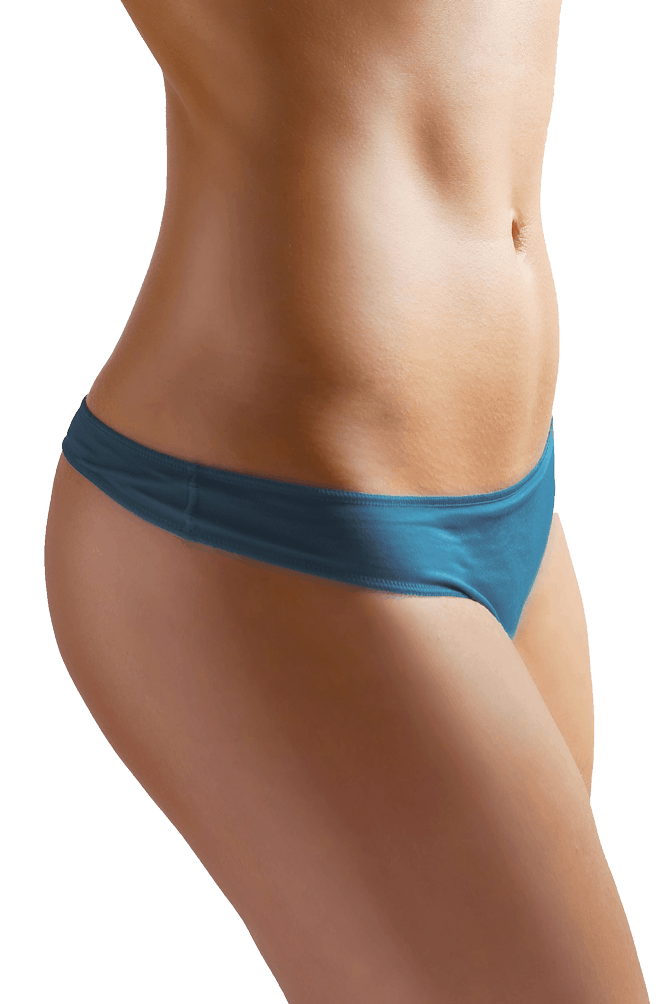
The Fleur-de-Lis abdominoplasty removes a large amount of excess skin and tissue in the upper middle portion of the abdomen. Dr. Michael Omidi often performs this procedure to accommodate patients who have experienced a significant weight loss. The Fleur-de-Lis abdominoplasty will tighten the skin on your abdomen from top to bottom in addition to eliminating excess fat and addressing muscle separation.
How is it Different from a Traditional Tummy Tuck?
While a full tummy tuck usually addresses muscle separation and flabby skin, it may not always be enough for patients who have experienced massive weight loss. Such patients often have overhanging vertical and circumferential skin that will not go away with exercise and cannot be treated with a traditional tummy tuck. These patients may benefit from the Fleur de Lis abdominoplasty that can effectively remove even the most excessive skin. While this procedure is more comprehensive, it is considered to be just as safe as a traditional tummy tuck.
Are you the Right Candidate?
The Fleur de Lis abdominoplasty may be right for you if:
- You have experienced massive weight loss
- You have stabilized your weight
- You exhibit overhanging vertical skin on your abdomen
- You have excess circumferential skin
Getting Ready for the Fleur de Lis Abdominoplasty
Prior to the Fleur de Lis abdominoplasty, Dr. Michael Omidi will instruct you to refrain from smoking and avoid certain medications that contribute to increased bleeding. The day before surgery, you should take care not to drink or eat anything after midnight. On the morning of surgery, take a prescribed nausea medication with a small sip of water and refrain from wearing makeup or perfume.
How is the Fleur de Lis Performed?
To deliver the best results, Dr. Michael Omidi takes the following steps in performing the Fleur de Lis abdominoplasty:
- An experienced anesthesiologist or CRNA will use general anesthesia for your safety.
- Dr. Michael Omidi will make a horizontal skin resection employed in traditional tummy tucks.
- He will also make a vertical skin resection to address both vertical and circumferential excess skin.
- The final incisions resemble the shape of the Lily flower which means “Fleur de Lis” in French.
- The Fleur de Lis abdominoplasty usually takes longer than a traditional tummy tuck.
African American Tummy Tuck

Throughout his extensive experience as a plastic surgeon, Dr. Michael Omidi has observed that the patient’s expectations are often determined by their ethnic heritage. Because there is no single universal standard of beauty, desired plastic surgery goals will vary from one individual to another depending on the patient’s cultural background. Thus, African-American women often have distinct expectations when it comes to choosing a tummy tuck.
Known for taking an individualized approach to each patient, Dr. Michael Omidi will do everything he can to accommodate these unique tummy tuck goals.
Like most patients who request a tummy tuck, African American patients desire to get rid of excess fat and tighten abdominal muscles. At the same time, Dr. Michael Omidi understands that most African-American women wish to have a flat and toned stomach while preserving their curves. To achieve the desired results, he has mastered a full tummy tuck technique that meets the needs of African-American patients.
Apart from removing the excess skin and unwanted fat from the abdominal area, he treats the hips and back area to emphasize the curves and create the coveted full-figured silhouette. African-American patients may also present unique health concerns in the course of plastic surgery. For example, they are more likely to develop irregularly shaped and raised keloid scars following a tummy tuck. In order to address this issue, Dr. Michael Omidi relies on internal sutures and surgical glue when performing African-American tummy tucks.
Is A Tummy Tuck Right For You?
During your consultation, Dr. Michael Omidi will respond to all of your questions and determine whether an African American tummy tuck is right for you. Knowing for being honest with his patients, he always cautions that this procedure should not be treated as a substituted for weight loss through exercise and diet. Dr. Michael Omidi stresses that patients with a BMI (Body Mass Index) of 30 or less have a better chance of obtaining desirable results and a lower risk of complications. That being said, he has extensive experience assisting patients with elevated BMI. Thus, he will accommodate your needs when weight can be lost through diet and exercise regimen.
Full Tummy Tuck vs. Mini Tummy Tuck
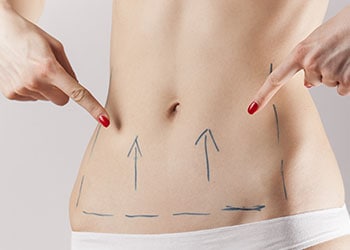
Like female patients, men can opt for either a mini tummy tuck, which eliminates stubborn pockets of fat below the navel, or a full tummy tuck, which also tightens the underlying muscles to create a more toned appearance.
- A full tummy tuck involves an incision around the belly button and another incision on the lower abdomen. During this procedure, Dr. Michael Omidi will remove excess skin and fat. He will also tighten the abdominal wall with permanent sutures.
- A mini tummy tuck involves a smaller incision around your bikini area; no incision is required around your belly button. After removing excess skin and fat through the incision, Dr. Michael Omidi will place permanent sutures to tighten abdominal muscles.
- Michael Omidi often performs a mini tummy tuck in conjunction with liposuction of the upper abdomen and the flank areas.
- A full tummy tuck typically requires 4 hours in surgery, while a mini tummy tuck can usually be performed in about an hour.
- Michael Omidi can perform a mini tummy tuck under a local anesthetic. This procedure allows for reduced scarring, located low enough to be concealed beneath a bathing suit or underwear.
- A full tummy tuck remains the best option for patients seeking to address muscle separation. It also corrects flabby skin above the belly button, which cannot be treated with a mini tummy tuck.
Health Considerations for Male Tummy Tuck Patients
- If you have diabetes, high blood pressure, high cholesterol, you should visit your doctor and make sure that your medications are optimized. Make sure to have your cholesterol, sugar, or blood pressure well controlled. You doctor will instruct you on how to manage your medications prior to surgery
- If you smoke, it’s best to stop well in advance of surgery. Smoking increases risks of the tummy tuck procedure
- Patients should be close to their optimal weight prior to the tummy tuck procedure. A rule of thumb is having a BMI or body mass index under 30. Persons with heavy musculature or dense bones may have a higher BMI and may be considered for the procedure after an evaluation.
Getting Ready for a Male Tummy Tuck
- Getting close to your goal weight is important
- Make sure to maintain good nutrition prior to surgery; dieting and starvation should be avoided
- Stop all weight loss medications
- Discontinue medications that thin the blood such as aspirin, Advil, Ibuprofen. Consult with your physician prior to stopping.
- If you have any medical issues or over 50 years old, visit your doctor and let him or her know you are considering elective surgery
- Make sure to hydrate well before your surgery
- On the day before surgery, you should take care not to drink or eat anything after midnight.
- In the morning before surgery, take a prescribed nausea medication with a small sip of water and refrain from wearing makeup or perfume.
MALE TUMMY TUCK
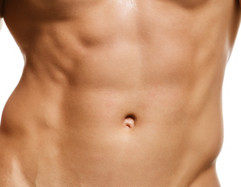
A tummy tuck or abdominoplasty removes excess abdominal skin and tightens stretched abdominal muscles. It will also reduce the appearance of stretch marks, especially those located below the navel. Excess skin tissue and stomach bulge do not improve with diet or exercise and require surgical removal.
- Most effective for patients that have achieved weight loss
- Tightens abdominal muscles
- Removes excessive skin and stretch marks
- Improves contour of the pubic area, the mons, and upper thighs
- Enhances the contour of the umbilicus or belly button
- Often performed in conjunction with liposuction or liposculpture to enhance the results
- Men are increasingly seeking a more toned, youthful and flatter abdomen.
- The male tummy tuck saw a 15% increase in popularity last year
- The procedure addresses unique needs of male patients to provide a masculine and toned male abdomen
How is a Male Tummy Tuck Different from a Female Tummy Tuck?
Dr. Michael Omidi takes into account the unique needs of his male patients to attain excellent tummy tuck results. The following considerations demonstrate some differences between a male tummy tuck and a female tummy tuck:
- Different pattern of skin removal
- The incisions determine the amount and location of skin removed. While eliminating excess skin, Dr. Michael Omidi will focus on enhancing the contours of the male abdomen and overall male physique.
- Differing pattern of fat distribution in a man from a woman
- A man’s fat distribution is very different than that of a woman. The areas most different are around the umbilicus, the flanks or sides, and around the thigh areas. Omidi will consider this and tailor the tummy tuck procedure and liposculpture to accentuate the male musculature.
- Differing amounts of intra-abdominal fat
- Males tend to accumulate more fatty tissue inside the abdomen compared to women
- Michael Omidi will consider these differences prior to the surgery and design a plan to address this problem as well as the pattern of abdominal plication
- Accentuation of six-pack or rectus muscle
One of the most important aspects of a beautiful tummy tuck is a natural-appearing umbilicus.
- Male patients often complain of a large, excessively round belly button, which can be improved with a tummy tuck.
- Aside from reducing its size, Dr. Michael Omidi will give your belly button an attractive and natural oval shape.
- He will also address stretch marks below the navel to reduce a drooping appearance
GETTING READY FOR YOUR TUMMY TUCK

Prior to surgery, Dr. Michael Omidi will instruct you to refrain from smoking and avoid certain medications that contribute to increased bleeding. On the day before surgery, you should take care not to drink or eat anything after midnight. On the morning of surgery, take a prescribed nausea medication with a small sip of water and refrain from wearing makeup or perfume.
What To Expect The Day of Surgery
A tummy tuck typically requires only one surgical procedure. A mini tummy tuck lasts for about an hour, while a full tummy tuck takes 3-4 hours to complete. If additional procedures are performed in conjunction with the tummy tuck, more time may be required. Before operating, Dr. Michael Omidi will administer anesthesia to ensure that you experience no pain during surgery.
Following the procedure, make sure that you can count on someone to drive you home.
Because you will need help with your daily chores, you should have a responsible adult stay with you for at least 48 hours. If you are unable to make arrangements for a ride home, please notify us in advance and we will prepare an after-care facility for you to say overnight.
Recovery After Surgery
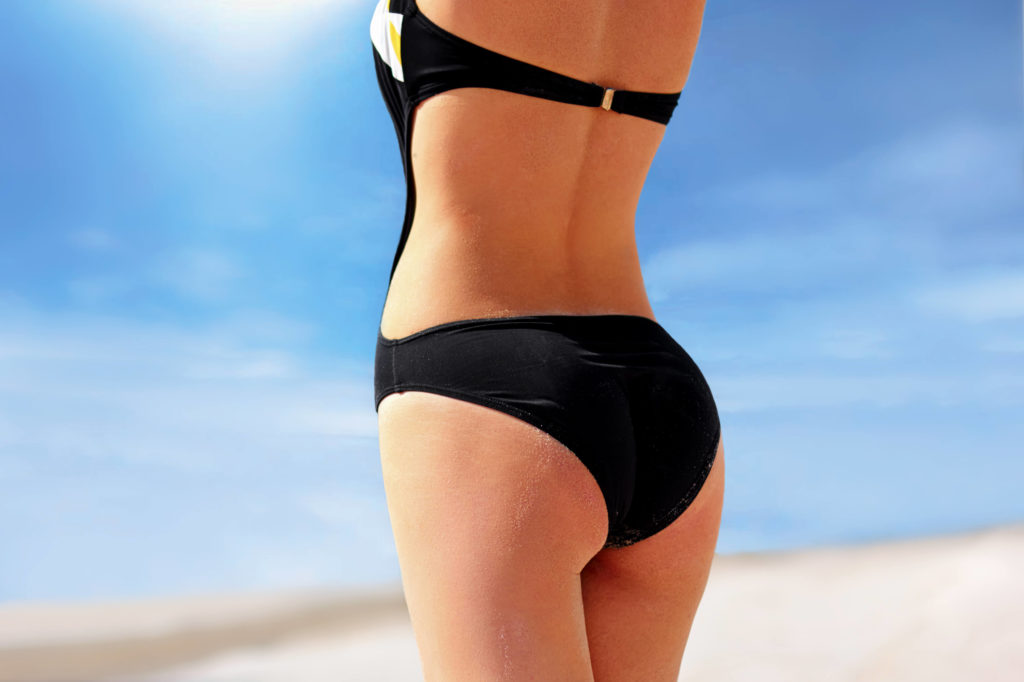
After your tummy tuck procedure, you will be able to return home on the same day. Some degree of swelling and bruising may appear immediately after the procedure and is considered normal. Because Dr. Michael Omidi and his staff are committed to treating patients with utmost consideration and care, they will regularly follow up to ensure the rapid healing process and, if necessary, prescribe medications to relieve any discomfort.
Dr. Michael Omidi will offer expert advice on managing any post-operative discomfort caused by the procedure.
Typically, wearing a compression garment helps to promote a reduced swelling and a more rapid healing process. During the recovery, heavy lifting and other forms of strenuous activity should be avoided to allow for proper healing of the incision. Normally, it takes 6 to 8 months for swelling to subside completely. In turn, any scarring will fade significantly in about a year, leaving you with the results guaranteed to bring you self-confidence and satisfaction for many years to come.
RECOVERY TIMELINE
- Immediately after the procedure: At least one hour in a recovery room.
- Next day: Dressings are taken off. Fluids are checked every six hours. Drains are used to eliminate excess fluid from incisions.
- Week 1: Abdominal compression garment is used to promote healing. Patients maintain a diet low in sodium to reduce swelling. Drains may be taken out by the end of the week.
- Week 2: Some sutures can be removed along the lower abdominal area. Patients may return to work by the end of the week but refrain from physical exercise.
- Week 3: Sutures are removed along the umbilicus. Patients may return to their normal diet.
- Week 4: Patients may begin a light physical exercise, but avoid strenuous physical activity such as heavy lifting.
- Week 6: Compression garment may be removed by the end of the week.
- Week 8: Patients may engage in a more active form of physical exercise such as lifting.
SCHEDULING A CONSULTATION
Scheduling a consultation is a crucial first step in making your tummy tuck dreams come true. It allows Dr. Michael Omidi to carefully assess your needs and discuss your desired tummy tuck results. After serving numerous patients in Los Angeles, Beverly Hills, Pomona, and Apple Valley, Dr. Michael Omidi has developed a reputation for dedicating a substantial amount of time to in-person exams. A firm believer in building a close personal rapport with patients prior to surgery, he will give you enough time to present reasons for requesting a tummy tuck before going over every step involved in the procedure.





